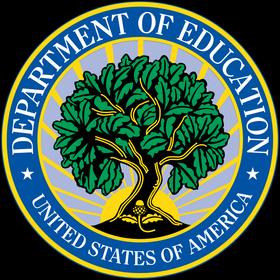For the 2025 school year, there are 4 public schools serving 2,188 students in Mc Leansville, NC (there are 1 private school, serving 156 private students). 93% of all K-12 students in Mc Leansville, NC are educated in public schools (compared to the NC state average of 92%).
The top ranked public schools in Mc Leansville, NC are Mcleansville Elementary School, Madison Elementary School and Northeast Guilford High School. Overall testing rank is based on a school's combined math and reading proficiency test score ranking.
Mc Leansville, NC public schools have an average math proficiency score of 27% (versus the North Carolina public school average of 51%), and reading proficiency score of 31% (versus the 50% statewide average). Schools in Mc Leansville have an average ranking of 1/10, which is in the bottom 50% of North Carolina public schools.
Minority enrollment is 81% of the student body (majority Black), which is more than the North Carolina public school average of 57% (majority Black and Hispanic).
Best Public Schools in Mc Leansville, NC (2025)
School
(Math and Reading Proficiency)
(Math and Reading Proficiency)
Location
Grades
Students
Rank: #11.
Mcleansville Elementary School
(Math: 40-44% | Reading: 35-39%)
Rank:
Rank:
4/
Bottom 50%10
5315 Frieden Church Rd
Mc Leansville, NC 27301
(336) 698-0144
Mc Leansville, NC 27301
(336) 698-0144
Grades: PK-5
| 322 students
Rank: #22.
Madison Elementary School
(Math: 35-39% | Reading: 35-39%)
Rank:
Rank:
3/
Bottom 50%10
3600 Hines Chapel Road
Mc Leansville, NC 27301
(336) 375-2555
Mc Leansville, NC 27301
(336) 375-2555
Grades: K-5
| 193 students
Rank: #33.
Northeast Guilford High School
(Math: 40-44% | Reading: 33%)
Rank:
Rank:
3/
Bottom 50%10
6700 Mcleansville Road
Mc Leansville, NC 27301
(336) 375-2500
Mc Leansville, NC 27301
(336) 375-2500
Grades: 9-12
| 960 students
Rank: #44.
Northeast Guilford Middle School
(Math: 21% | Reading: 28%)
Rank:
Rank:
1/
Bottom 50%10
6720 Mcleansville Road
Mc Leansville, NC 27301
(336) 375-2525
Mc Leansville, NC 27301
(336) 375-2525
Grades: 6-8
| 713 students
Frequently Asked Questions
What are the top ranked public schools in Mc Leansville, NC?
The top ranked public schools in Mc Leansville, NC include Mcleansville Elementary School, Madison Elementary School and Northeast Guilford High School.
How many public schools are located in Mc Leansville?
4 public schools are located in Mc Leansville.
What percentage of students in Mc Leansville go to public school?
93% of all K-12 students in Mc Leansville are educated in public schools (compared to the NC state average of 92%).
What is the racial composition of students in Mc Leansville?
Mc Leansville public schools minority enrollment is 81% of the student body (majority Black), which is more than the North Carolina public schools average of 57% (majority Black and Hispanic).
Which public schools in Mc Leansville are often viewed compared to one another?
Popular comparisons of public schools in Mc Leansville include: Mcleansville Elementary School vs. Madison Elementary School
Recent Articles

What Is A Charter School?
Explore the world of charter schools in this comprehensive guide. Learn about their history, how they operate, and the pros and cons of this educational innovation. Discover key facts about charter schools, including admission policies, demographics, and funding, as well as what to look for when considering a charter school for your child.

10 Reasons Why High School Sports Benefit Students
Discover the 10 compelling reasons why high school sports are beneficial for students. This comprehensive article explores how athletics enhance academic performance, foster personal growth, and develop crucial life skills. From improved fitness and time management to leadership development and community representation, learn why participating in high school sports can be a game-changer for students' overall success and well-being.

February 05, 2025
Understanding the U.S. Department of Education: Structure, Impact, and EvolutionWe explore how the Department of Education shapes American education, from its cabinet-level leadership to its impact on millions of students, written for general audiences seeking clarity on this vital institution.
